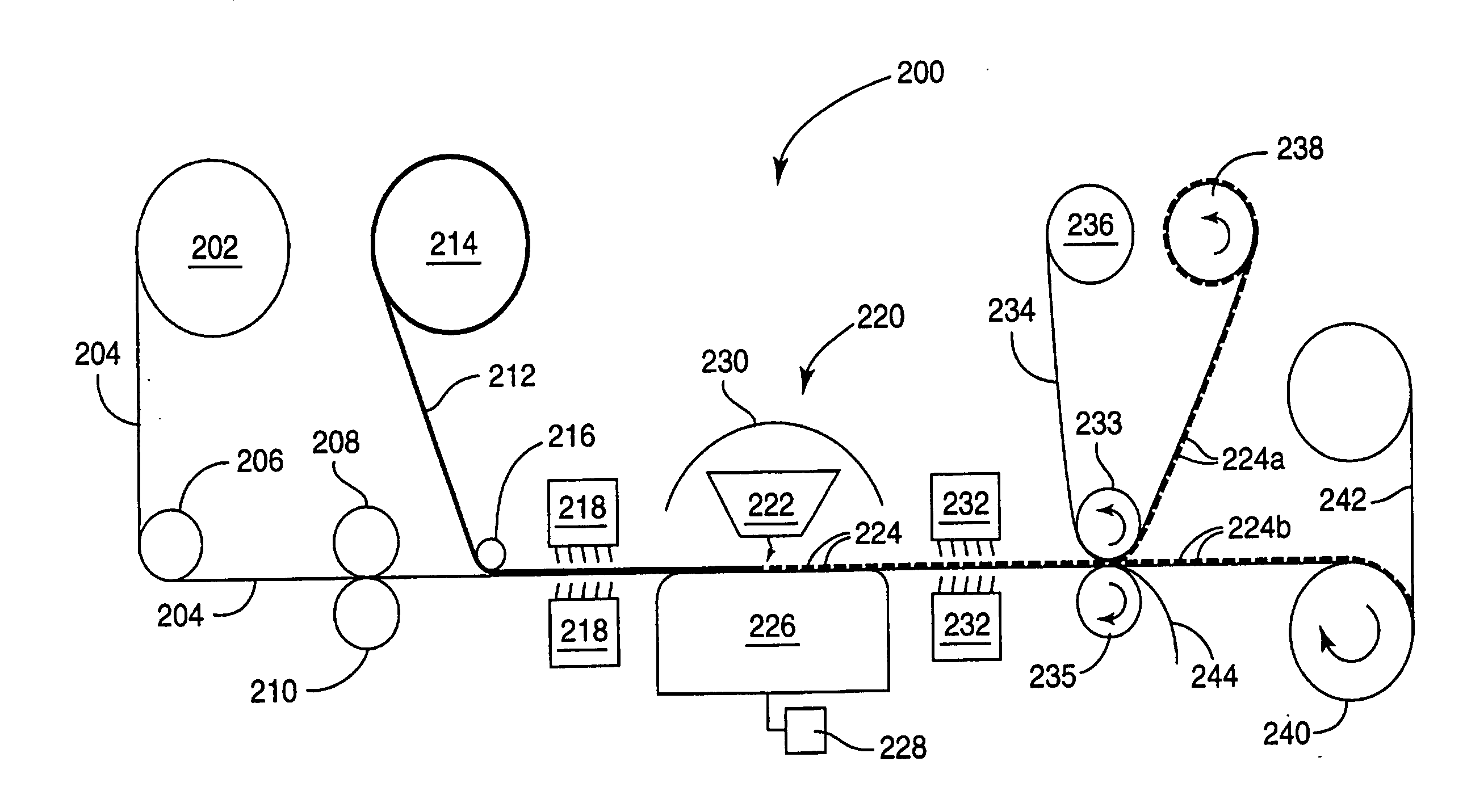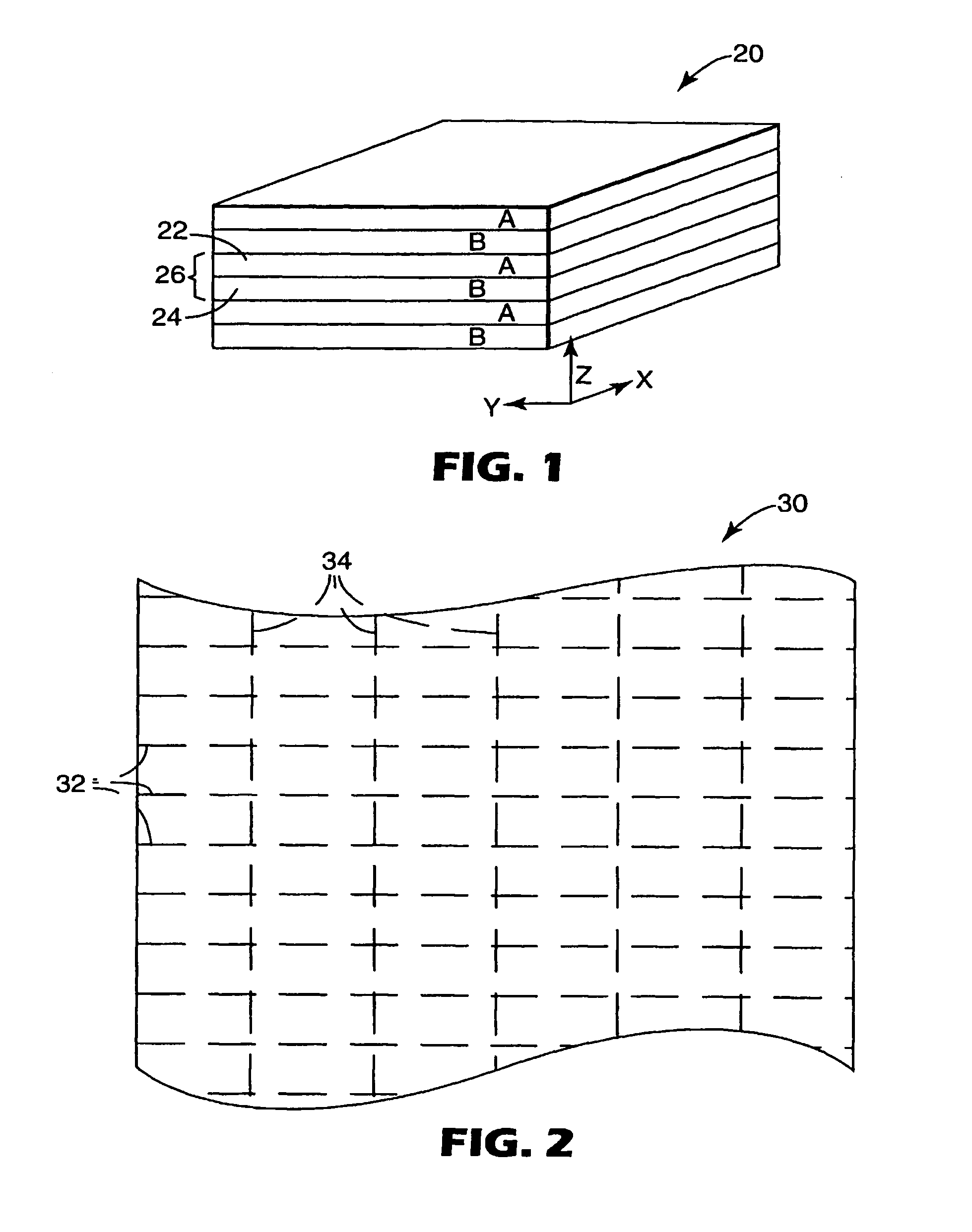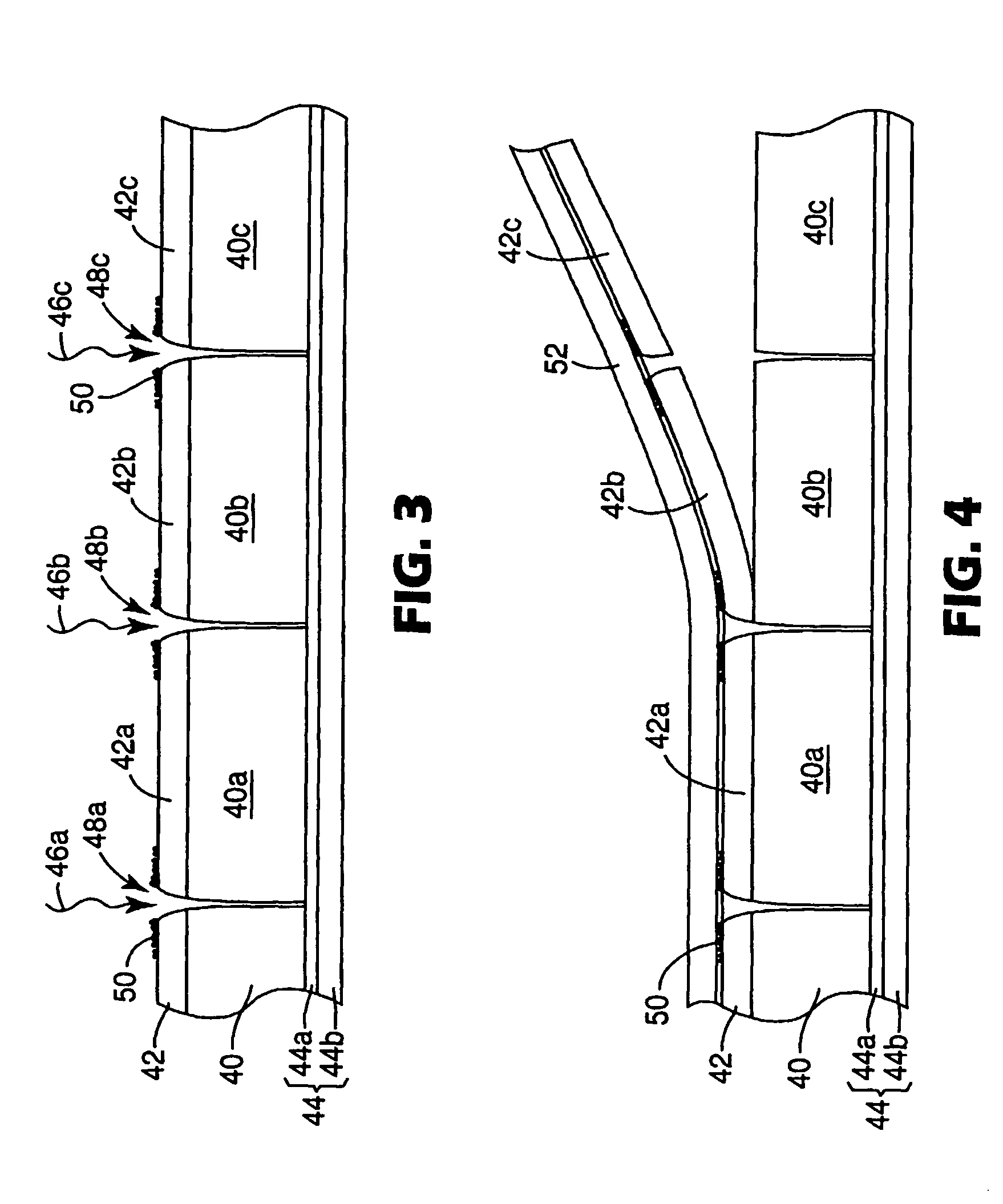Method for subdividing multilayer optical film cleanly and rapidly
The method of applying liners and using laser radiation to cut multilayer optical films addresses delamination issues, ensuring clean cuts and maintaining optical properties, suitable for applications requiring small, uniform pieces.
- Summary
- Abstract
- Description
- Claims
- Application Information
AI Technical Summary
Benefits of technology
Problems solved by technology
Method used
Image
Examples
example
[0053] A polymeric multilayer interference film was manufactured by coextruding alternating layers of a low melt coPEN made from a 90 / 10 copolymer of polyethylene naphthalate (PEN) / polyethylene terephthalate (PET) and polymethylmethacrylate (PMMA) at about 277° C. to form an extrudate having 224 individual layers sandwiched between two outer skin layers composed of the low melt coPEN. These layers defined an optical packet consisting essentially of 112 unit cells with an approximately linear thickness gradient along an axis perpendicular to the stack. The thickest unit cell, located at one side of the packet, was approximately 1.3 times thicker than the thinnest unit cell, located at the other side of the packet. The optical packet was asymmetrically multiplied to give a multilayer optical film construction having 448 individual layers with outer skin layers and an interior polymer boundary layer (PBL) between packets. The layer multiplication was carried out so that one of the opti...
PUM
| Property | Measurement | Unit |
|---|---|---|
| near-infrared wavelengths | aaaaa | aaaaa |
| wavelength | aaaaa | aaaaa |
| wavelengths | aaaaa | aaaaa |
Abstract
Description
Claims
Application Information
 Login to View More
Login to View More - R&D
- Intellectual Property
- Life Sciences
- Materials
- Tech Scout
- Unparalleled Data Quality
- Higher Quality Content
- 60% Fewer Hallucinations
Browse by: Latest US Patents, China's latest patents, Technical Efficacy Thesaurus, Application Domain, Technology Topic, Popular Technical Reports.
© 2025 PatSnap. All rights reserved.Legal|Privacy policy|Modern Slavery Act Transparency Statement|Sitemap|About US| Contact US: help@patsnap.com



